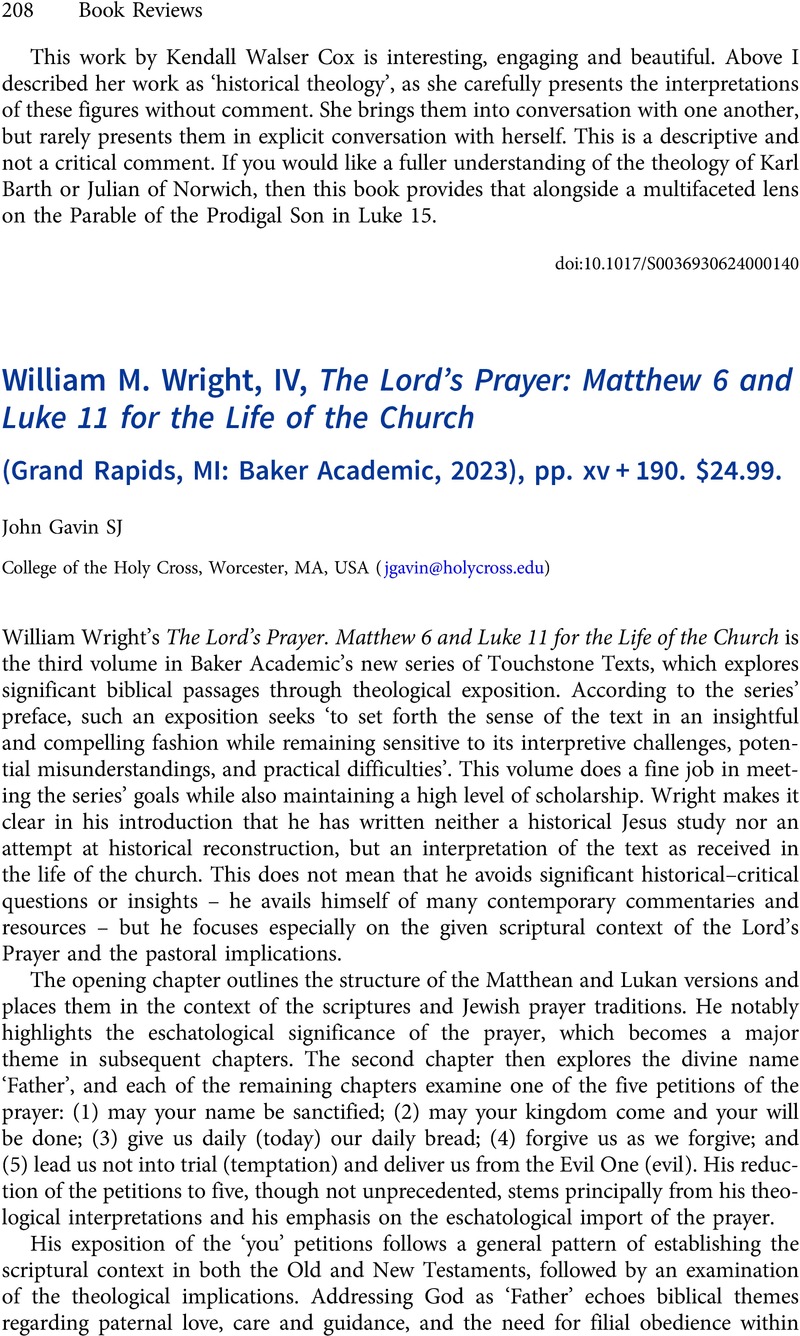No CrossRef data available.
Article contents
William M. WrightIV, The Lord's Prayer: Matthew 6 and Luke 11 for the Life of the Church (Grand Rapids, MI: Baker Academic, 2023), pp. xv + 190. $24.99.
Review products
William M. WrightIV, The Lord's Prayer: Matthew 6 and Luke 11 for the Life of the Church (Grand Rapids, MI: Baker Academic, 2023), pp. xv + 190. $24.99.
Published online by Cambridge University Press: 04 August 2023
Abstract
An abstract is not available for this content so a preview has been provided. Please use the Get access link above for information on how to access this content.

- Type
- Book Review
- Information
- Copyright
- Copyright © The Author(s), 2023. Published by Cambridge University Press



